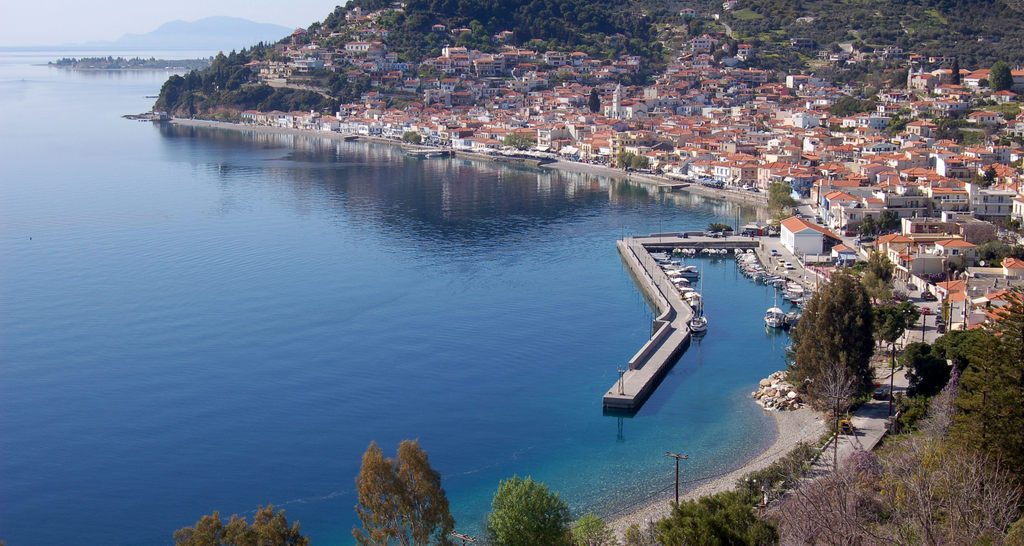Evia Isl. (Evvoia)

Évvoia is the second largest island of Hellas, after Crete, and third in the eastern Mediterranean sea. Its name derives from the many cattle flourishing on the island thanks to its rich pastures (Évvoia = ef + voía = good for oxen).
Initially it was inhabited by Éllopes in its north part, coming from Thessalía, and by Drýopes in its southern part, who came from the area of Parnassós, Fthiótida. It developed naval activity around 3000 BC. At the time of Homer, its name was already Évvoia. The 2 most significant cities were Halkída and Erétria, the rivalry of which lead to the prevalence of Halkída. At the end of the 6th cen. BC, the Athenians succumbed all of the island and put an end to the rule of Halkída.
During the Byzantine era, Évripos channel was fortified. During the 13th cen. AD, the island came to Frankish rule, then to Venetian in 1470 AD and then to the Turks. It will unite again with free Hellas in 1830 AD.
Évvoia is a beautiful island, green to the north and naked to the south, with temperate climate, more humid along its east coasts (to the Aegean) and more dry along the inner seas.

Halkída: The capital of the island, with a long history. One of the most active ancient cities, with a strong fleet and colonies in Sporádes, Thrace, Sicily. Its name came from the copper (halkós) its inhabitants worked or from “hálki”, a sea shell with which they used to create porfýra (a deep red paint used by noble and rich men only, due to its rarity). In Halkída, there is a drawbridge which unites the island with the mainland and separates the northern Évvoian gulf with the southern. At the point where the drawbridge is located, the phenomenon of the alternating tidal current is most intense and is worth seeing it. It is a phenomenon that presented a riddle in antiquity and even philosopher Aristotélis himself could not solve. It is said that from his frustration he fell into the sea (but came back up again and died later from sickness).
Kárystos: Ancient Kárystos was built in the 10th cen. BC by Drýopes at the foot of mount Óchi, 3 km away from where the harbour is today. The town was known for its special green marble (cipollino verde), which the Romans liked. The Venetian castle “Castel Rosso” was built in the place of the ancient citadel, in today’s Palaiochóra. There are ruins of the ancient fortification in Platanistós
Dystós lake: It is a shelter for migratory birds. Fishing and hunting are forbidden. South of the lake, on the slopes of a hill, lie the remains of the ancient city of Dystós. On top of the hill, where the ancient citadel used to be, the ruins of a medieval castle can be found.
